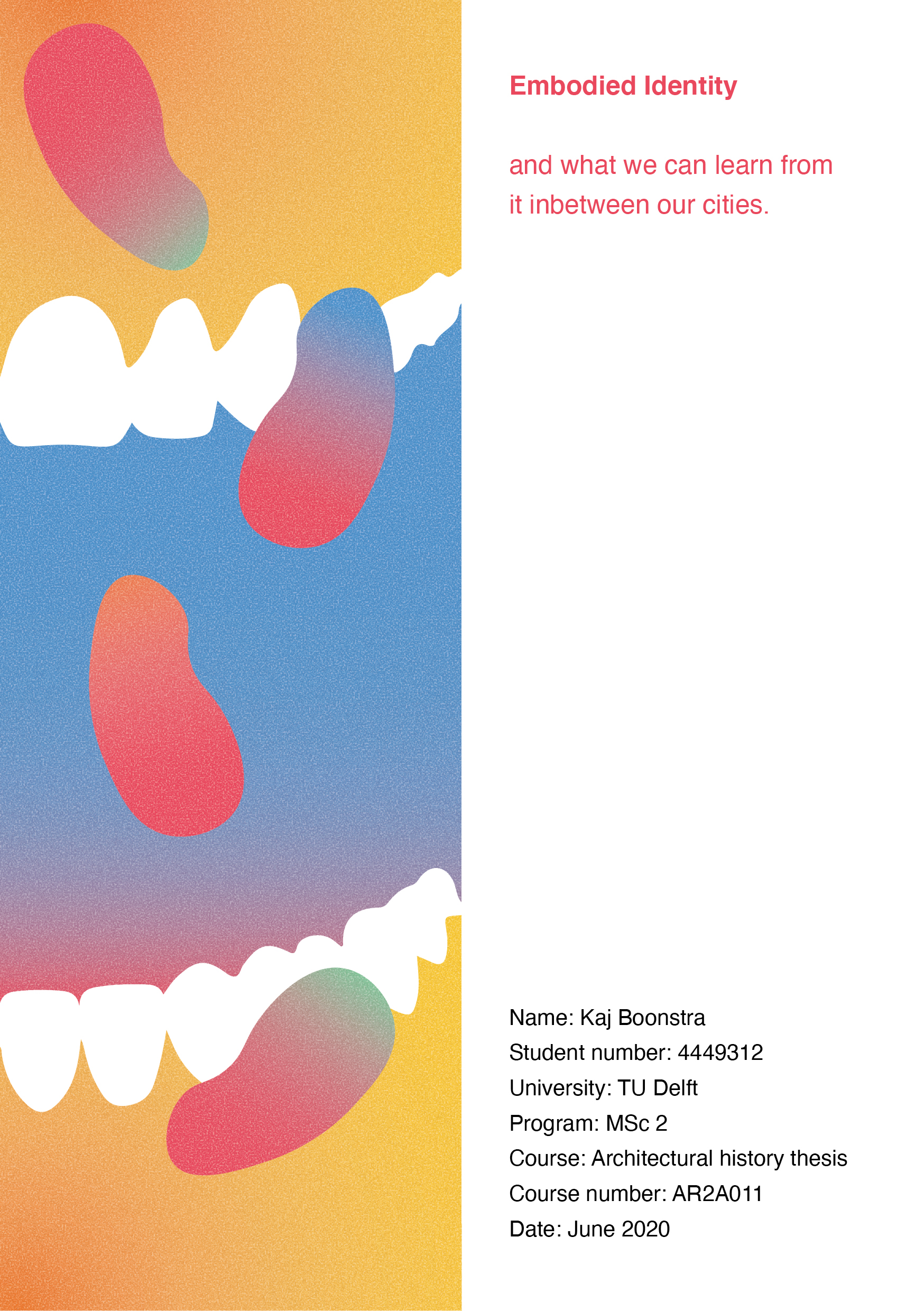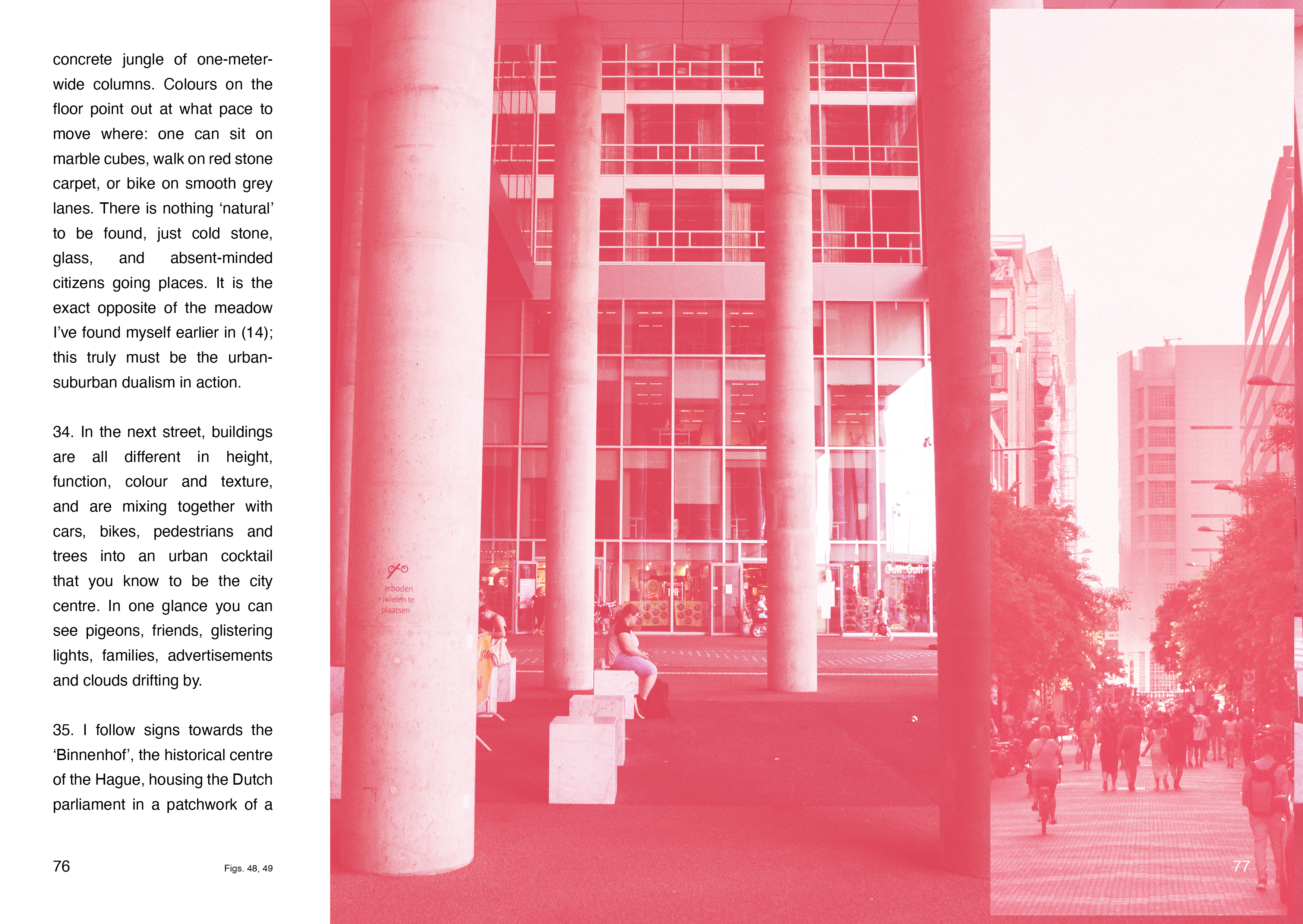Embodied Identity
2020 / Randstad, Netherlands
Masters History Thesis, TU Delft
In search of a new understanding of the areas inbetween our cities, the concept of ‘embodied identity’ is proposed in this thesis. Embodied identity is embedded in the culture and permanences that we co-create with the cities we inhabit; as we create the cities, they create us.
Culture and permanence manifest themselves over time and influence both our perception of our surroundings and the content of our everyday lives. Simultaneously, urbanisation unfolds, which is the generative force behind this co-creation of city and civilisation, and therefore also give shape to the embodied identity of a city.
The effects of urbanisation in the Randstad, a city region in the Netherlands, are analysed. It can be concluded that urbanisation in the Randstad has led to urban sprawl that is deemed repetitive and similar, which can be found in between its more historic city centres. Contradictorily, urbanisation also leads to a shift in perception of the places that this urban sprawl generates, as they are deemed second-rate. I render these places as ‘inbetween zones’.
To shed light on these processes, and find the embodied identity of these inbetween zones, I document my journey as I try to find them between historic Delft and the Hague. Through a summary of notions, I find that these inbetween zones are a product of the eye of the beholder. They bear different characteristics than the city such as an abundance of space, an enabling sense of liberty, unambiguous territorial demarcations, a slower pace, etc. The inbetween zones seem to confront us with our own modes of perceiving; they make us aware of the experience, choices, and limitations that the city offers to us, and do this through offering contrast.
If the inbetween zones teach us one thing, it’s the necesitty to doubt. Always question your surroundings, as you’ll find new understandings and realities through those questions.


















